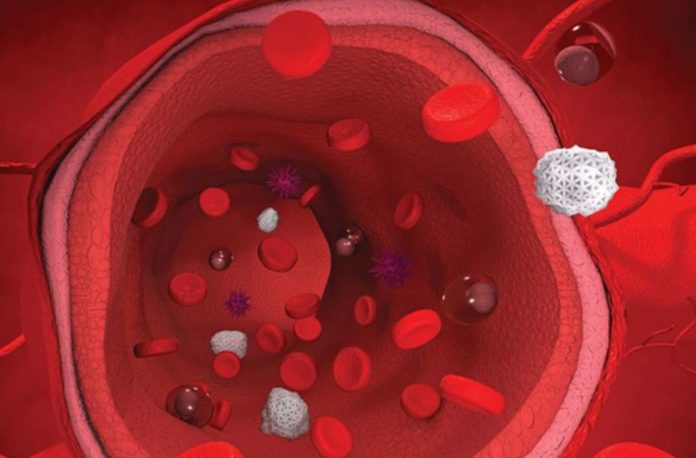People with the gene for familial hypercholesterolemia could be identified by screening and genetic testing.
New research published in the Journal of the American Heart Association says that screening and genetic testing could find more than a million adults in the US who carry the gene for familial hypercholesterolemia. This is a common genetic disorder that causes a high level of low-density lipoprotein (LDL) cholesterol, also called “bad cholesterol,” which can lead to an early heart attack or death.
Familial hypercholesterolemia is a hereditary condition that inhibits the body’s ability to recycle harmful cholesterol. As a result, LDL levels in the blood remain extremely high; in extreme situations, levels in adults can reach 190 milligrams per deciliter (mg/dL).
LDL cholesterol should be less than 100 mg/dL. Total blood cholesterol levels, on the other hand, should be assessed alongside other recognized cardiovascular disease risk factors.
One in every 250 people in the United States is thought to carry at least one gene for familial hypercholesterolemia. The median age of a first heart attack among adults with a gene for familial hypercholesterolemia is 50 years for men and 60 years for women if the illness is not treated, but the median age of a first heart attack in the general population is 66 years for men and 72 years for women.
Fewer people inherit two familial hypercholesterolemia genes (one from each parent), and they are more likely to have major issues in infancy or adolescence, such as considerably greater bad cholesterol and heart disease.
Most people with familial hypercholesterolemia are not diagnosed until they are 50 years old. If a young adult is diagnosed with familial hypercholesterolemia, they will likely benefit from more intensive treatment to avoid heart attacks and strokes, said study lead author Brandon K. Bellows, a professor at the University of Columbia in New York City.
If the risk of heart disease remains low, the American Heart Association recommends that all persons aged 20 and above have their cholesterol and other traditional cardiac risk factors evaluated every four to six years. Screening for familial hypercholesterolemia is not routine, and it necessitates the gathering of extra clinical data or diagnostic genetic testing.
An earlier statement from the American Heart Association in the year 2020 suggested that genetic testing for cardiovascular disease should normally be reserved for individuals who have a confirmed or suspected diagnosis of a disease as well as individuals who have a known disease-causing genetic variant in their family.
As a second option, the researchers calculated how many people with familial hypercholesterolemia could be identified by screening all adults for cholesterol levels and the presence of early heart disease in an individual or a close family member (father, brother, or son), with and without genetic tests.
In a screening of 1,000 adults, clinical criteria alone identified 3.7 cases of familial hypercholesterolemia, but genetic testing alone found 3.8 cases of familial hypercholesterolemia in the same population.
When clinical criteria and genetic testing were combined, 6.6 incidences of familial hypercholesterolemia per 1,000 persons examined were discovered.
Clinical criteria alone identified 1.3 incidences of familial hypercholesterolemia per 1,000 screened persons in young adults aged 20 to 39, a proportion that climbed to 4.2 per 1,000 when genetic testing was added.
The authors of the study recommend that Clinical criteria and genetic tests should be used to screen for familial hypercholesterolemia.
To discover familial hypercholesterolemia, those with high cholesterol levels or a family member who had a heart attack at early age should undergo genetic testing. The greatest strategy to lower the risk of a heart attack or stroke at a young age is to diagnose and treat familial hypercholesterolemia early.
The fact that genetic testing was used in addition to clinical criteria to identify more persons suggests that many patients with a genetic mutation may not display the typical clinical picture at the time of screening.
“This has been seen in other studies. Universal screening programs with genetic testing may be the best way to identify these people. However, this may be impractical and therefore screening targeted at specific groups, such as young adults, may allow earlier identification and treatment of familial hypercholesterolemia,” Bellows added.
One of the study’s weaknesses is that the UK biobank sample consisted mostly of elderly persons (ages 40-69) who self-identified as white. As a result, the UK Biobank dataset analysis may not be applicable to varied or younger populations.
Follow-up studies are being conducted to answer questions about the most useful and cost-effective strategies for screening for familial hypercholesterolemia, such as the best age to begin screening and whether there is a difference in the number of heart attacks and strokes based on the screening method, such as universal screening against close relatives with familial hypercholesterolemia.
Image Credit: Getty
You were reading: Heart Disease: Two simple tests can detect the risk much earlier
